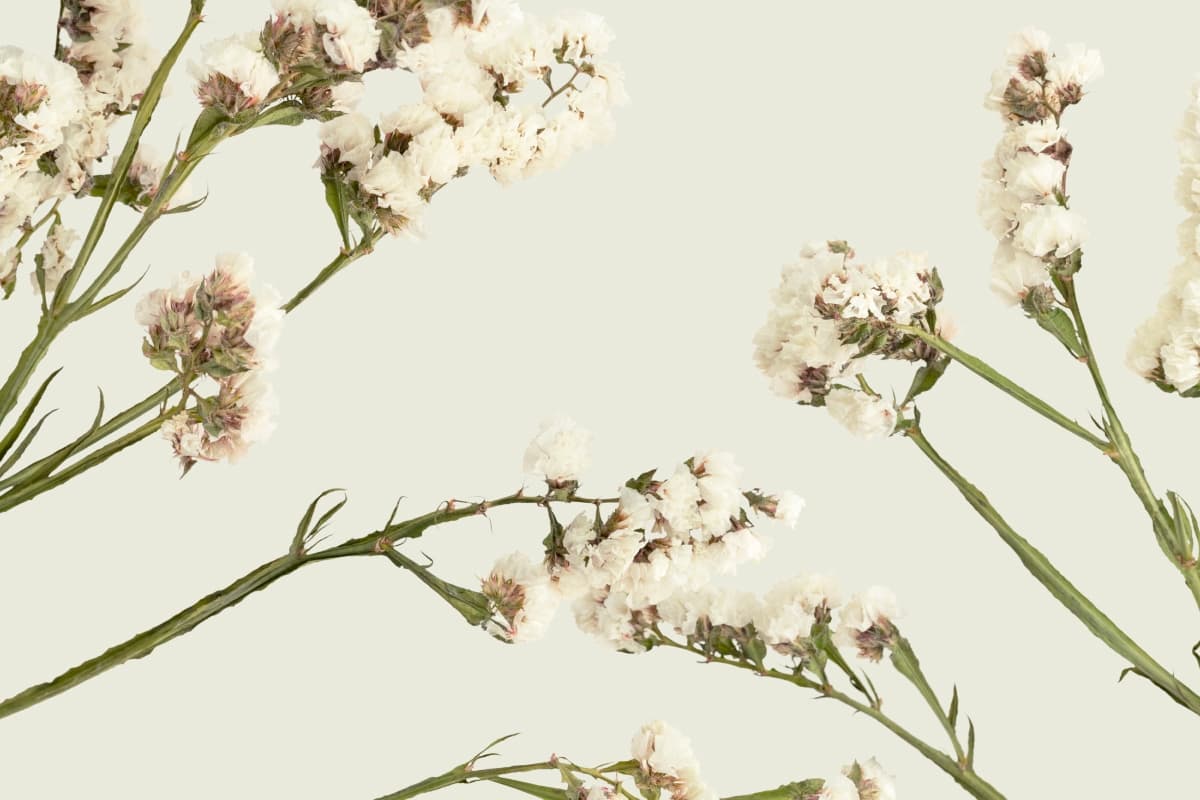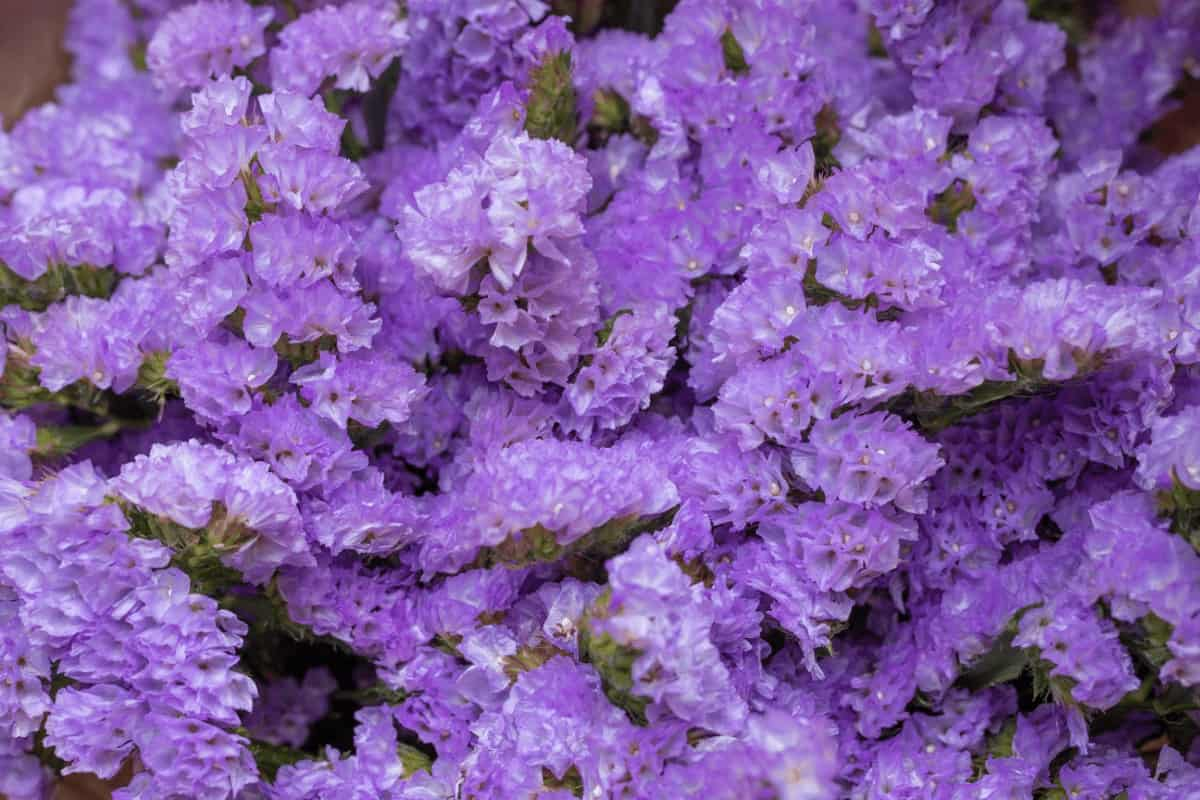Statice flowers, with their vivid colors and unique texture, are a beloved choice for gardeners and floral enthusiasts alike. These resilient and eye-catching flowers are not only a delight in gardens but also revered for their exceptional longevity in dried floral arrangements.

This article explores the comprehensive journey of cultivating statice flowers, covering everything from propagation methods like growing from seeds and cuttings to caring techniques, including watering, fertilizing, and pest management. We’ll delve into the specifics of planting and nurturing these flowers in various environments, such as indoors, in water, or pots, and also discuss the art of harvesting and preserving their beauty through drying.
How to Grow Statice Flowers
Understanding Statice Flowers
Statice flowers, known for their vibrant colors and papery texture, are a popular choice for both garden enthusiasts and florists. These flowers are not only attractive but also long-lasting, making them ideal for dried flower arrangements. Growing statice flowers can be a rewarding experience, whether you’re doing it indoors, in water, in pots, or directly in your garden.
They are versatile and can be grown in various ways, including from seeds or cuttings. Understanding the basics of statice flowers, including their growth habits and preferred conditions, is the first step in successfully cultivating them in your home or garden.
Propagation Techniques for Statice Flowers
When it comes to propagation, statice flowers offer two primary methods: growing from seeds and from cuttings. To grow statice flowers from seeds, it’s essential to start with quality statice flower seeds. Sow the seeds in well-draining soil and provide adequate warmth and light for germination.
On the other hand, growing statice flowers from cuttings involves taking a healthy stem from an existing plant and rooting it in either water or a soil mix. This method is particularly useful for preserving the characteristics of a specific variety. Both methods have their advantages, and choosing the right one depends on your resources and preferences.
Preparing the Soil and Choosing a Planting Site
For successful growth, statice flowers require well-draining soil and a sunny location. Enhance soil quality by integrating organic material to boost both drainage and fertility. A site that receives full sun for at least six hours a day is ideal. If you’re considering growing statice in pots, ensure the pots have adequate drainage holes and use a high-quality potting mix. This preparation is crucial for the healthy growth of statice flowers, whether you’re planting them directly in the ground or containers.
Planting Statice Flowers: A Step-By-Step Guide
Planting statice flowers involves a few simple steps. First, ensure the soil or potting mix is well-prepared and moist. If you’re planting seeds, sow them shallowly and cover them lightly with soil. For planting statice flowers in pots, ensure the pot has sufficient drainage and use a quality potting mix. When transplanting seedlings or cuttings, handle them gently to avoid damage. Space the plants appropriately to allow for air circulation and growth. Consistent care during the early stages of planting ensures a healthy foundation for your statice flowers.
Caring for Statice Flowers: Watering and Fertilizing
Proper watering and fertilizing are key to the health of statice flowers. Water the plants regularly, ensuring the soil is moist but not soggy. Excessive watering may result in root rot, making it crucial to allow the soil to partially dry between watering sessions. Apply a well-balanced fertilizer to ensure the plants receive essential nutrients. This is especially important if you’re growing statice flowers in pots, as nutrients in potting soil can deplete over time. Regular care in watering and fertilizing will promote robust growth and vibrant blooms.
Pruning and Deadheading Statice Flowers
Pruning and deadheading are important practices to maintain the health and appearance of statice flowers. Prune the plants to remove any dead or diseased foliage and encourage new growth. Deadheading, the process of removing spent blooms, not only keeps the plant looking tidy but also stimulates further flowering. Regular pruning and deadheading are essential for the longevity and aesthetic appeal of your statice flowers.
Pest and Disease Control for Statice Flowers
Statice flowers, like all plants, are susceptible to pests and diseases. Frequent observation and timely action are essential for the well-being of plants. Typical threats consist of aphids and spider mites, which can be managed through suitable insecticides or natural solutions. Preventing diseases like root rot and fungal infections is achievable by maintaining adequate air circulation and avoiding excessive watering. Swiftly addressing any indications of pests or diseases is critical for safeguarding the vitality of your statice flowers.
In case you missed it: How to Grow Shampoo Ginger Lily: From Propagation to Harvest

Harvesting Statice Flowers for Drying
One of the main attractions of statice flowers is their suitability for drying, which preserves their color and form for long-lasting arrangements. To achieve ideal drying conditions, pick the flowers when they’re fully bloomed but not yet showing signs of wilting. Trim the stems to your preferred length and suspend them upside down in a well-ventilated, dry space. Drying may take a few weeks, depending on the humidity and temperature. Once dried, the statice flowers can be used in various decorative ways, maintaining their beauty for months or even years.
Overwintering Statice Flowers
In colder climates, overwintering statice flowers is an important consideration. These plants can be sensitive to frost and may require protection during the winter months. If you’re growing statice in pots, move them indoors or to a sheltered area to prevent freezing. For statice plants in the ground, applying a layer of mulch can provide insulation against cold temperatures. Effective winter care guarantees the survival and flourishing of your statice flowers in the upcoming season.
Storing and Using Dried Statice Flowers
Once your statice flowers are dried, storing them properly is essential to maintain their quality. Store dried statice flowers in a cool, dry location, shielded from direct sunlight and moisture. You can store them in boxes or hang them in clusters. Dried statice flowers offer versatility for numerous decorative applications like bouquets, wreaths, or as part of dried flower arrangements. Their enduring beauty and low upkeep requirements make them a favored option for home decor and crafting projects.
In case you missed it: A Step-By-Step Guide to Dracaena Propagation: How to Grow from Cuttings

Conclusion
Growing statice flowers is a fulfilling endeavor that rewards gardeners with stunning blooms and lasting dried arrangements. Throughout this guide, we’ve explored the various aspects of cultivating statice, from propagation and planting to care and preservation. We’ve learned that whether grown indoors, in pots, or directly in the garden, these flowers require attention to detail in terms of soil preparation, watering, and fertilization.
- Feed Your Flock for Less: Top 10 Tips to Save on Chicken Feed
- Ultimate Guide to Ossabaw Island Hog: Breeding, Raising, Diet, and Care
- Hatching Answers: The Top 10 Reasons Your Chickens Aren’t Laying Eggs
- Eggs and Economics: Breaking Down the Cost of Raising Backyard Chickens
- Defend Your Greens: Proven Methods to Keep Iguanas Out of Your Garden
- Ultimate Guide to Cinnamon Queen Chicken: A Comprehensive Guide for Beginners
- Ultimate Guide to California Tan Chicken: Breeding, Raising, Diet, Egg-Production and Care
- Ultimate Guide to Marsh Daisy Chicken: Breeding, Raising, Diet, and Care
- 10 Types of Chicken Farming Businesses You Can Start for Profits